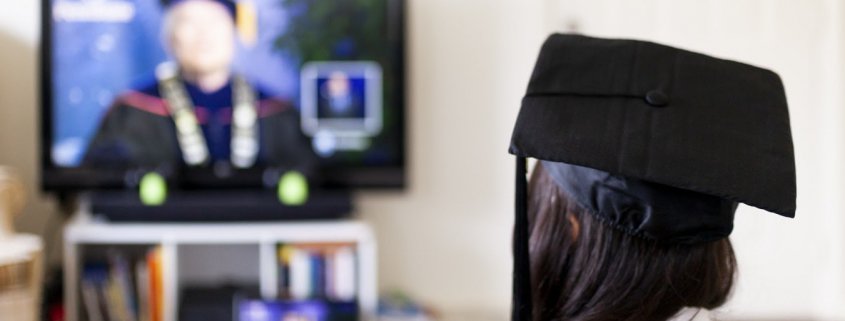The pandemic has turned higher education upside down on its head.
With its closures and openings, and part closures, then further openings, students and teachers around the country are frustrated—and rightly so.
But rather than focusing on how to recover the existing education system as we know it, have the pandemic-related changes to higher education have presented opportunities to build something even better?
Did COVID-19 expose the holes in higher education?
When the stay-at-home sanctions hit in in spring, colleges and universities were forced to rush into total “remote learning”.
And aside from the chaos of students and teachers attempting to adjust to the bizarre new normal, it also exposed some of the not-so-secret holes and cracks in the higher education system.
Pre-pandemic, there has always been criticism of the traditional higher education model—students, educators and those within the sector have voiced their concerns about the challenges over the last decade and in multiple ways.
But as colleges and universities had little choice in the drastic turn to the digital world, the holes in the system have become clearer than ever.
Lecture halls—a nostalgic farewell or overdue good riddance?
When Cambridge became the first university to publish the planned measures for the 2020-2021 academic year, media outlets said it would be “the end of education as we know it”.
The university announced that it would move all “face-to-face lectures” online until summer 2021, followed by several other universities who put similar measures in place.
But while there were students and lecturers who agreed that it was the most realistic course of action, the pandemic has forced some of the longest-standing complaints about higher education out in the open.
The most significant? Skyrocketing tuition fee costs.
If all university classes and lectures are held online, with drastically reduced contact hours with lecturers and teachers, and not to mention the completely removed social aspect of going to university, can those high fees still be justified?
Hundreds of thousands of students every year dream about the university experience. Your university years are the best years of your life, is a phrase we’ve all heard before—and for some of us lucky ones, that was true.
Student rites of passage… through a screen
This year, students are going through Fresher’s Week on their laptops at home, along with lectures, seminars and a few social events attempted to mimic the real student experience.
Unfortunately, none of it resembles anything close to a student’s usual experience.
Some students have even demanded refunds for their tuition fees, and other students have opened up about the strain on their mental health. And with thousands of students moving back into their halls, only to be told a week earlier that lectures and classes have been halted, it’s hardly a surprise.
One study conducted in March revealed that over 20% of students said they would defer enrolment if universities were still delivering remote classes. The reality is that the social aspect of the university, as well as the networking opportunities, student societies and on-campus research, all make up the bulk of what most students consider to be the value of higher education.
For students looking at entire semesters of virtual learning, tens of thousands in student debt doesn’t seem as feasible.
Isolation means fewer international students
According to UNESCO, there were over 5.3 million international students in 2017 (2 million more than in 2000).
In fact, the entire global higher education industry was valued at 65.4 billion dollars in 2019—and that number was expected to reach 117.95 billion by 2027.
Considering that we’re now living in a world where students all over the globe cannot leave their homes (or cities, countries, depending on the regional restrictions), that projection seems rather unlikely.
And even once the restrictions are lifted globally, how many of those students will actually want to travel overseas for university?
Colleges and universities must take into account the anxiety and fear that may linger in different societies, even long after the virus has gone away.
In the UK, for example, international students make up around 20% of the entire student population.
But since the borders recently reopened, rather than travelling the UK and Europe as is customary for many international students in the summer, many of them will have gone back home, eager to see their friends and family after the ordeal of being in isolation or so long.
Sadly, many of them may not return.
Redefining the role of the educator
Even before the pandemic forced schools to shut their gates, our explosively digital era has been making the teacher’s role somewhat complex.
The prevalent idea of the teacher as the knowledge-holder, who shares their wisdom unto students, doesn’t quite work for the 21st century, some argue.
Homework doesn’t necessarily need to be restricted to textbook work, and the old-school method of memorising and regurgitating information to pass exams is becoming more obsolete as technology gets more advanced.
Students have access to knowledge at their fingertips. They can even learn new technical skills entirely online through their phones, laptops and tablets, without a teacher in sight.
And the pandemic has only made that more evident.
That means higher education as we know it has no choice but to redefine the role of the educator, and of traditional classrooms and lecture theatres, to reflect today and tomorrow’s digital growth.
But what would that look like?
Fast Company recently published an article about how the pandemic has changed staff development in education and they’re not the only ones.
World Economic Forum shared a post highlighting how COVID-19 is changing the way we educate future generations.
It’s all about redefining the role of the educator and moving towards being a facilitator. Students should be aided in their learning and taught how to learn, rather than being taught to memorise.
If one thing’s clear from the shuttering of colleges and institutions, it’s that students need teachers who can facilitate their development as they prepare to become contributing members of society.
The future of higher education after COVID-19
We can’t say for sure what education will look like once this is all over. Higher education is a pillar of our society and affects tomorrow’s leaders, tomorrow’s future, and we hope, with immense resilience, that students and educators will adjust and adapt to this new world.
Do you have any predictions for how higher education will be changed after the pandemic? Comment on our LinkedIn post and let us know. We love reading every single message and comment!












Leave a Reply
Want to join the discussion?Feel free to contribute!